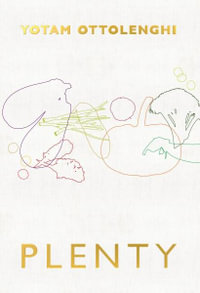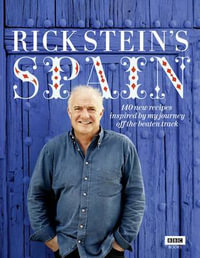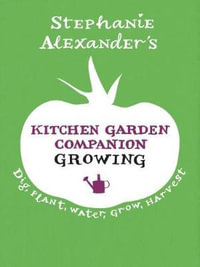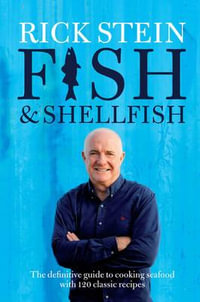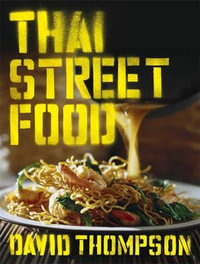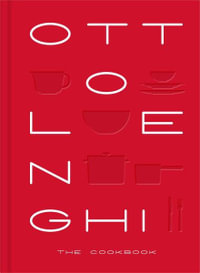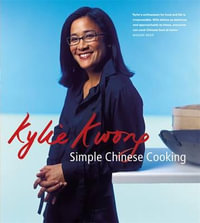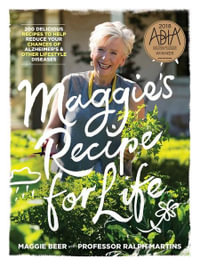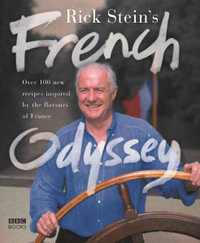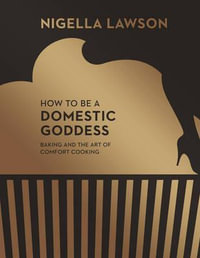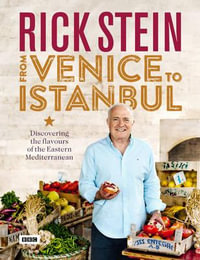
At a Glance
Paperback
320 Pages
320 Pages
Dimensions(cm)
27 x 24.5 x 2.5
27 x 24.5 x 2.5
Paperback
RRP $55.00
$39.90
27%OFF
or 4 interest-free payments of $9.97 with
orIn Stock and Aims to ship in 1-2 business days
Cooking Chinese food at home has never been easier – all you need is this book, a wok and a quick trip to the supermarket.
Kylie Kwong's philosophy is to use the freshest produce and cook it simply to make the most of the clean flavours. All the necessary ingredients are available at your supermarket and Kylie's recipes are friendly and straightforward. In no time, you'll be cooking everyday favourites like soy sauce chicken and sung choi bau on weeknights and fresh-tasting button mushroom salad and prawn wonton soup for weekend occasions.
Enhanced by Earl Carter's inspiring photographs of all the finished dishes, and with step-by-step pictures to guide you through their preparation, Simple Chinese Cooking will never be far from your kitchen.
About the Author
Kylie Kwong is well known as the proprietor of the celebrated Billy Kwong restaurant in inner-city Sydney, and as a passionate advocate of sustainable food and ethical eating. Her restaurant uses locally grown, organic and biodynamic produce, and was the first climate-friendly restaurant in New South Wales.
A long-time supporter of the Slow Food movement and its aims, Kylie runs a stall at Eveleigh Farmers' Market in Sydney and helps to nurture the next generation of cooks through the Stephanie Alexander Kitchen Garden Foundation. She has also developed a range of fair trade tableware in conjunction with Oxfam.
Kylie is the author of six books – Kylie Kwong's Simple Chinese Cooking Class, It Tastes Better, My China, Simple Chinese Cooking, Heart and Soul and Recipes and Stories – and presenter of three television series that have aired internationally.
Kylie Kwong's philosophy is to use the freshest produce and cook it simply to make the most of the clean flavours. All the necessary ingredients are available at your supermarket and Kylie's recipes are friendly and straightforward. In no time, you'll be cooking everyday favourites like soy sauce chicken and sung choi bau on weeknights and fresh-tasting button mushroom salad and prawn wonton soup for weekend occasions.
Enhanced by Earl Carter's inspiring photographs of all the finished dishes, and with step-by-step pictures to guide you through their preparation, Simple Chinese Cooking will never be far from your kitchen.
About the Author
Kylie Kwong is well known as the proprietor of the celebrated Billy Kwong restaurant in inner-city Sydney, and as a passionate advocate of sustainable food and ethical eating. Her restaurant uses locally grown, organic and biodynamic produce, and was the first climate-friendly restaurant in New South Wales.
A long-time supporter of the Slow Food movement and its aims, Kylie runs a stall at Eveleigh Farmers' Market in Sydney and helps to nurture the next generation of cooks through the Stephanie Alexander Kitchen Garden Foundation. She has also developed a range of fair trade tableware in conjunction with Oxfam.
Kylie is the author of six books – Kylie Kwong's Simple Chinese Cooking Class, It Tastes Better, My China, Simple Chinese Cooking, Heart and Soul and Recipes and Stories – and presenter of three television series that have aired internationally.
Through my work in and around the world of food and cooking, the contribution I would like to offer to the community is to make Chinese cuisine totally accessible and non-scary, to demystify it. I want people to realise that they can confidently prepare a delicious Chinese meal anytime – whether it be a no-nonsense, minimum-fuss, midweek meal, or an elaborate Chinese banquet for a group of friends. I want to spread the word about the sheer intelligence, refinement and beauty of Chinese cuisine, which is a most sophisticated yet simple, healthy, life-giving cooking style to learn.
As a fourth-generation Australian-born Chinese, I grew up on Chinese cuisine. My parents, two brothers and I resided in the north-western suburbs of Sydney and, for as long as I can remember, food and family have been at the centre of our existence. My mother is the finest Chinese cook, and she showered us day-in, day-out, year-in, year-out with down-to-earth, flavoursome, mouthwatering, hearty home cooking. Mum says I've been a good eater ever since I was born: apparently as a baby, when I was not sleeping, I was opening my mouth waiting for the next piece of bok choy with oyster sauce to go in!
My mother diligently passed on the fine cooking skills and recipes she had inherited from her father and mother. After instilling in us the basics of cooking, she unwittingly taught my brothers and me perhaps the greatest lesson anyone could ever learn in the kitchen: how to cook with your intuition, with your heart. She did this simply by cooking happily and generously for us. Mum taught us how to love food, to revel in all the activities from market to table; she taught us how to cherish and share food. In short, she taught us how to eat properly.
This book is all about simple Chinese cooking – yes, there is such a thing. I know some of you will be screwing your noses up at me, and thinking that I am completely mad . . . Well, I am not!
The main thing to know is that all the ingredients in this book are readily available in leading supermarkets. You do not even have to venture down to Chinatown – although I hope that one day you will. It is so colourful and so much fun to shop there, once you start exploring all those shelves laden with unfamiliar bottles and mysterious packages. Over the past year or so, I have prowled along supermarket shelves, carefully researching ingredients, and I can assure you that, alongside potatoes, iceberg lettuce, Weet-bix and power cords, there are fresh shiitake mushrooms, Hokkien noodles, wonton wrappers and five-spice powder. (See pages 9-17 for more information on the ingredients used in this book, along with some tips on choosing them.)
The range of fresh ingredients and good quality Asian condiments and spices available in today's supermarkets is inspiring. Better still, supermarkets are stocking more and more organic produce, free-range eggs and poultry, and nongenetically-modified food. Anytime you have the opportunity to buy such items, I urge you to do so, and to be mindful of the origins of your purchases. Not only does ingesting fresh food enhance our physical, spiritual and mental wellbeing, it is also our responsibility as human beings to contribute in all the ways we can to help save our long-suffering planet.
I do not use MSG (monosodium glutamate) in any of my cooking as I believe that if you cook with the freshest produce, then the natural flavours do not need any 'taste enhancers' – I have included some notes on this much talked-about subject in the 'Ingredients' section (see page 13). For the increasing number of people who are wheat intolerant, I should also mention a substitute for soy sauce. Tamari (see page 16 for details) is a wheat-free soy sauce we use at Billy Kwong, and you wouldn't believe the look of relief that spreads across the faces of those who are desperate for Chinese food but sadly allergic to wheat . . .
The other thing to bear in mind about Chinese food is that it generally takes some time to prepare but little time to cook. So it's important to have all ingredients prepared – washed, trimmed, sliced and diced before you start cooking – because when you crank up that wok, or put that fish into the boiling steamer, or lower that prawn into the deep-frying oil, it all happens very, very quickly!
The book is divided into 14 chapters, each devoted to one main ingredient, whether it be chicken, rice, stocks or seafood. I would especially like to draw your attention to the chapters on tofu and salads. While tofu cookery is uncharted territory for many Westerners, it plays an extremely important part in all Fast Asian cuisines, which offer a multitude of creative ways of preparing this healthgiving food. Please keep an open and inquisitive mind when it comes to tofu and try out at least one of the recipes.
I have always found myself wanting to include bowls of fresh salad leaves and raw vegetables in all my Chinese meals, so I have created some recipes that allow you to do just this! To my mind, salad is inseparable from the Australian way of eating.
I have also included some notes on the elements of Chinese cooking that can make all the difference: sauce brands, woks and steamers, cooking equipment, table settings, menu planning, the Chinese concept of the shared table, the vexed question of what to drink with Chinese food and a whole lot more.
A strong belief held by Buddhists is that all human beings embody unique talents and that a major role for us in this lifetime is to discover and embrace these, and to share them with others with the intention of enhancing their lives.
In an Australian context, I see this reflected in our intensely layered, multicultural society. For me, the immigrants and their families, their stories and their commitment to the traditional ways, have contributed markedly to the spirit of this place. We have a voracious appetite for creativity and culture, and it is these people, along with their exquisite food – their pastizzi, their sashimi, their witchetty grubs, their olio d'oliva extra vergine, their dim sum, their pain au chocolat, their chicken pho, their pappadums, their falafels – that make this such a vibrant and diverse country.
As with all aspects of our short yet venerable existence, it is the 'breath' of people, their ability to express their 'aliveness', their talent and their tolerance, that truly make the difference. In my view, Chinese cuisine encourages us to do exactly this.
As a fourth-generation Australian-born Chinese, I grew up on Chinese cuisine. My parents, two brothers and I resided in the north-western suburbs of Sydney and, for as long as I can remember, food and family have been at the centre of our existence. My mother is the finest Chinese cook, and she showered us day-in, day-out, year-in, year-out with down-to-earth, flavoursome, mouthwatering, hearty home cooking. Mum says I've been a good eater ever since I was born: apparently as a baby, when I was not sleeping, I was opening my mouth waiting for the next piece of bok choy with oyster sauce to go in!
My mother diligently passed on the fine cooking skills and recipes she had inherited from her father and mother. After instilling in us the basics of cooking, she unwittingly taught my brothers and me perhaps the greatest lesson anyone could ever learn in the kitchen: how to cook with your intuition, with your heart. She did this simply by cooking happily and generously for us. Mum taught us how to love food, to revel in all the activities from market to table; she taught us how to cherish and share food. In short, she taught us how to eat properly.
This book is all about simple Chinese cooking – yes, there is such a thing. I know some of you will be screwing your noses up at me, and thinking that I am completely mad . . . Well, I am not!
The main thing to know is that all the ingredients in this book are readily available in leading supermarkets. You do not even have to venture down to Chinatown – although I hope that one day you will. It is so colourful and so much fun to shop there, once you start exploring all those shelves laden with unfamiliar bottles and mysterious packages. Over the past year or so, I have prowled along supermarket shelves, carefully researching ingredients, and I can assure you that, alongside potatoes, iceberg lettuce, Weet-bix and power cords, there are fresh shiitake mushrooms, Hokkien noodles, wonton wrappers and five-spice powder. (See pages 9-17 for more information on the ingredients used in this book, along with some tips on choosing them.)
The range of fresh ingredients and good quality Asian condiments and spices available in today's supermarkets is inspiring. Better still, supermarkets are stocking more and more organic produce, free-range eggs and poultry, and nongenetically-modified food. Anytime you have the opportunity to buy such items, I urge you to do so, and to be mindful of the origins of your purchases. Not only does ingesting fresh food enhance our physical, spiritual and mental wellbeing, it is also our responsibility as human beings to contribute in all the ways we can to help save our long-suffering planet.
I do not use MSG (monosodium glutamate) in any of my cooking as I believe that if you cook with the freshest produce, then the natural flavours do not need any 'taste enhancers' – I have included some notes on this much talked-about subject in the 'Ingredients' section (see page 13). For the increasing number of people who are wheat intolerant, I should also mention a substitute for soy sauce. Tamari (see page 16 for details) is a wheat-free soy sauce we use at Billy Kwong, and you wouldn't believe the look of relief that spreads across the faces of those who are desperate for Chinese food but sadly allergic to wheat . . .
The other thing to bear in mind about Chinese food is that it generally takes some time to prepare but little time to cook. So it's important to have all ingredients prepared – washed, trimmed, sliced and diced before you start cooking – because when you crank up that wok, or put that fish into the boiling steamer, or lower that prawn into the deep-frying oil, it all happens very, very quickly!
The book is divided into 14 chapters, each devoted to one main ingredient, whether it be chicken, rice, stocks or seafood. I would especially like to draw your attention to the chapters on tofu and salads. While tofu cookery is uncharted territory for many Westerners, it plays an extremely important part in all Fast Asian cuisines, which offer a multitude of creative ways of preparing this healthgiving food. Please keep an open and inquisitive mind when it comes to tofu and try out at least one of the recipes.
I have always found myself wanting to include bowls of fresh salad leaves and raw vegetables in all my Chinese meals, so I have created some recipes that allow you to do just this! To my mind, salad is inseparable from the Australian way of eating.
I have also included some notes on the elements of Chinese cooking that can make all the difference: sauce brands, woks and steamers, cooking equipment, table settings, menu planning, the Chinese concept of the shared table, the vexed question of what to drink with Chinese food and a whole lot more.
A strong belief held by Buddhists is that all human beings embody unique talents and that a major role for us in this lifetime is to discover and embrace these, and to share them with others with the intention of enhancing their lives.
In an Australian context, I see this reflected in our intensely layered, multicultural society. For me, the immigrants and their families, their stories and their commitment to the traditional ways, have contributed markedly to the spirit of this place. We have a voracious appetite for creativity and culture, and it is these people, along with their exquisite food – their pastizzi, their sashimi, their witchetty grubs, their olio d'oliva extra vergine, their dim sum, their pain au chocolat, their chicken pho, their pappadums, their falafels – that make this such a vibrant and diverse country.
As with all aspects of our short yet venerable existence, it is the 'breath' of people, their ability to express their 'aliveness', their talent and their tolerance, that truly make the difference. In my view, Chinese cuisine encourages us to do exactly this.
ISBN: 9781921382635
ISBN-10: 1921382635
Published: 2nd January 2014
Format: Paperback
Language: English
Number of Pages: 320
Audience: General Adult
Publisher: Penguin Australia Pty Ltd
Country of Publication: AU
Edition Number: 1
Dimensions (cm): 27 x 24.5 x 2.5
Weight (kg): 1.49
Shipping
| Standard Shipping | Express Shipping | |
|---|---|---|
| Metro postcodes: | $9.99 | $14.95 |
| Regional postcodes: | $9.99 | $14.95 |
| Rural postcodes: | $9.99 | $14.95 |
How to return your order
At Booktopia, we offer hassle-free returns in accordance with our returns policy. If you wish to return an item, please get in touch with Booktopia Customer Care.
Additional postage charges may be applicable.
Defective items
If there is a problem with any of the items received for your order then the Booktopia Customer Care team is ready to assist you.
For more info please visit our Help Centre.
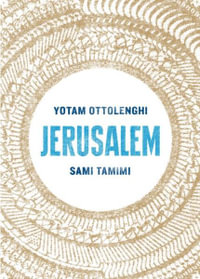
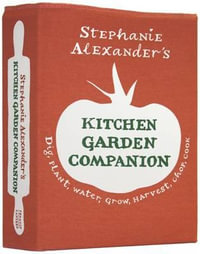
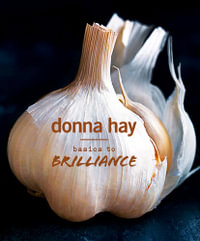

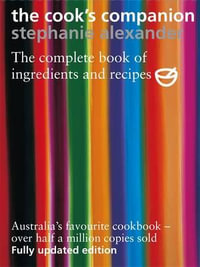
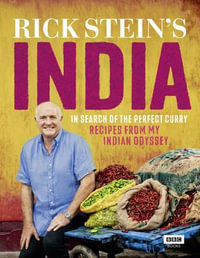
![Plenty More : Vibrant Vegetable Cooking from London's Ottolenghi [A Cookbook] - Yotam Ottolenghi](https://www.booktopia.com.au/covers/200/9780091957155/3909/plenty-more.jpg)
